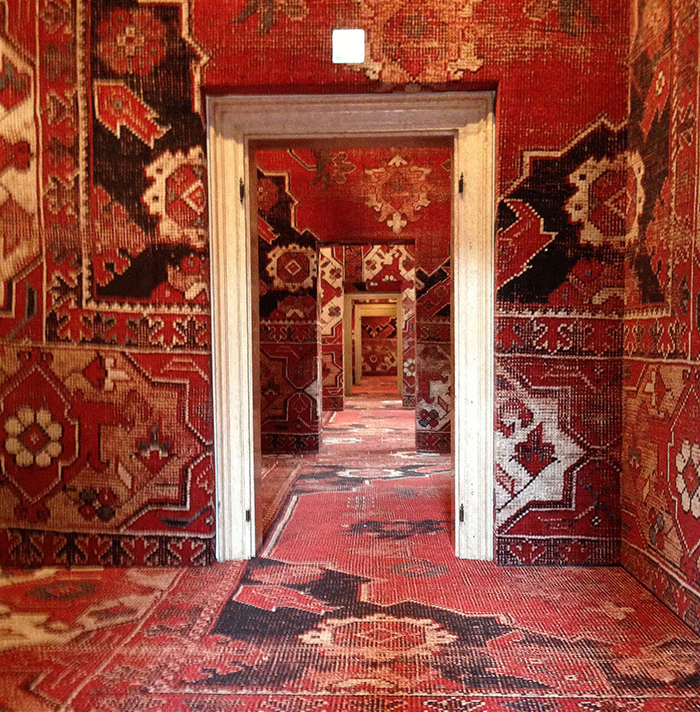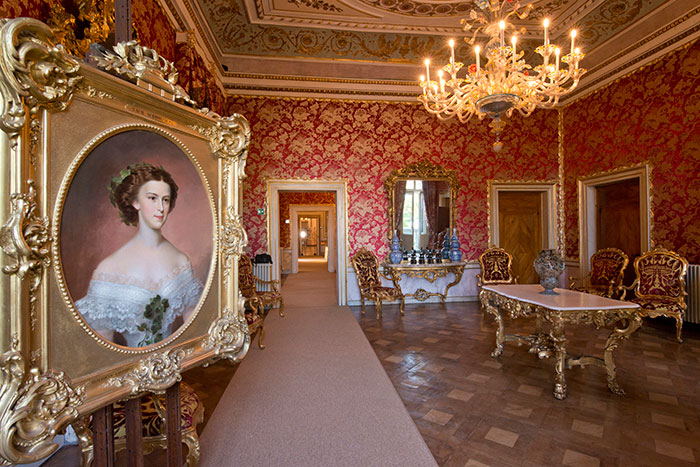As well as boasting historical architecture and gondola-filled canals, Venice is a wonderland brimming with art.
According to Truman Capote, "Venice is like eating an entire box of chocolate liqueurs in one go", and he's not far off the mark. From the moment you step out of the station and confront the Grand Canal, or head toward the shimmering city across the lagoon in a high-powered water taxi (vaporetto), there is that sense of feverish excitement as Venice materialises before your eyes.
As with a box of floridly wrapped sweets, each one more extraordinary than its companions, it's almost impossible to choose which palazzo to visit first because they all seem so enticing. Of course, every two years the Biennale de Venezia brings contemporary art to the fore, but whatever time you visit there is an extraordinary treasure trove to be discovered.
The truth is, Venice itself is a work of art, constructed through centuries of self-aggrandisement by a fabulously wealthy citizenry trying to outshine its neighbours and impress visiting dignitaries and merchants. Rising up from the lagoon, the sheer audacity of the city is what first assaults your senses as you weave your way on a vaporetto down the Grand Canal toward Piazza San Marco. The wedding-cake facades are so fantastical it's hard to believe they are real, yet there they are, glimmering in the morning light or melting into gold at late afternoon.
Once the initial astonishment subsides it is time to unearth the treasures that lie within these confectionary palazzos and begin your Capote-style binge. After coffee and dolci in the Piazza San Marco, you may as well start at the Palazzo Ducale where, as well as the grand staircases and extravagant rooms, they often have the kind of blockbuster exhibitions that reveal another layer of understanding and awareness about this amazing city.
On the opposite side of the Grand Canal, French fashion magnate François Pinault commissioned Japanese architect Tadao Ando to convert the old customs house into a contemporary art space. Transforming the Ponte della Dogana into a gallery was a challenge requiring a juxtaposition of the soft brick walls and wooden rafters with precise and elegant handrails and glass room divisions. The resulting spaces are often given over to individual artists to install a group of works. During the Venice Biennale in 2012, the installation in the tower by Diana Thater transformed not only the room, but also the landscape outside, into a saturated blue environment.

Rudolf Stingel's installation at the Palazzo Grassi. Home to François Pinault's collection of artwork, the gallery was emptied by Stingel, who carpeted all three levels of the building from floor to ceiling.
Pinault's other major exhibition space in Venice is the Palazzo Grassi, also renovated by Tadao Ando, but with a good deal more sensitivity to the original building, which retains its grandeur and character. Since 2006, Pinault has been showing his collection in these elegant spaces, but for the last Biennale he handed the entire gallery over to Rudolf Stingel to install his paintings. In an act of unabashed arrogance, Stingel emptied the entire building and covered all the walls and floors of its three storeys with a material he fabricated to look like an antique Persian carpet. The joy of discovering interesting works at every turn was lost entirely with the hubris of this gesture.
After a ride to Rialto, and a wander through serpentine calles, you find yourself at the Palazzo Fortuny, surely one of the most underrated treasures in Venice. The home of designer Mariano Fortuny — he of pleated gowns fame — the building is full of his collection of art, found objects and fabrics, a unique setting for exhibitions of major contemporary artists, whose works nestle alongside Fortuny's furniture and studio accoutrements.
No art crawl through Venice would be complete without a visit to the Gallerie dell'Accademia, just over the Accademia Bridge (one of only two bridges across the Grand Canal). The spacious galleries are not only a respite from the summer heat (though the air-conditioners were struggling last year), they also offer an opportunity to see walls stacked high with works by Bellini, Tintoretto, Titian and Veronese, not to mention room upon room of lesser-known but extraordinary artists who have lived and worked in Venice over the past 600 years.
It's a unique gallery experience in which the inadequacies of presentation,
audience flow, disability access, decent lighting and appropriate seating are happily excused.
A short walk away is the Palazzo Venier dei Leoni, bought by Peggy Guggenheim in 1949 to house her collection. The experience of visiting her remarkable collection in the place where she originally displayed her treasured possessions remains an extraordinary privilege. Not only are the works a unique snapshot of one of the most creative and turbulent periods in history (between the wars and in the decades of rebuilding after World War II), but their presentation in a domestic environment reinforces the sense of personal commitment Peggy made to the artists she supported and the artwork she believed was an important marker in human history. The cool, leafy entrance to the home/gallery and the welcoming garden with its captured breezes certainly contribute to an enjoyable visit on a hot summer's day in Venice.
For serious art lovers, the Scuola Grande di San Rocco is high on the list because Tintoretto, one of the great Venetian masters, was commissioned to cover the ceiling and walls of the hostel with paintings. He painted 27 massive canvases for the Hall of the Hostel between 1564 and 1567, 25 more for the upper hall between 1576 and 1581, then eight further canvases for the ground floor hall from 1582 to 1587. It is surely one of the most inspired examples of patronage in the history of art.

The Sala delle Udineze, at the Museo Correr.
With so many treats in the artistic chocolate box that is Venice — buildings with wonderful collections like the Ca' Rezzonico and the Ca' Pesaro, and museums like the Museo Correr and the Museo del Vetro, which houses collections of Venetian glass — there is enough to keep you busy for weeks. Add in the Venice Biennale every second year between June and November, and you are likely to be entranced, enthused and committed to a return visit.